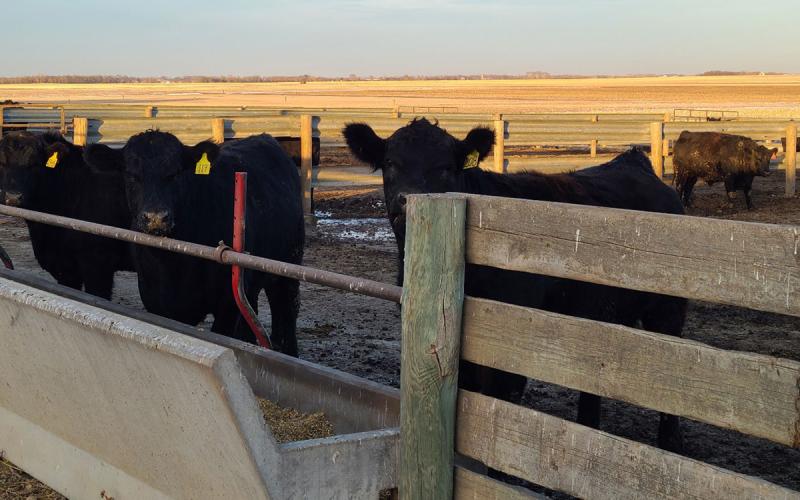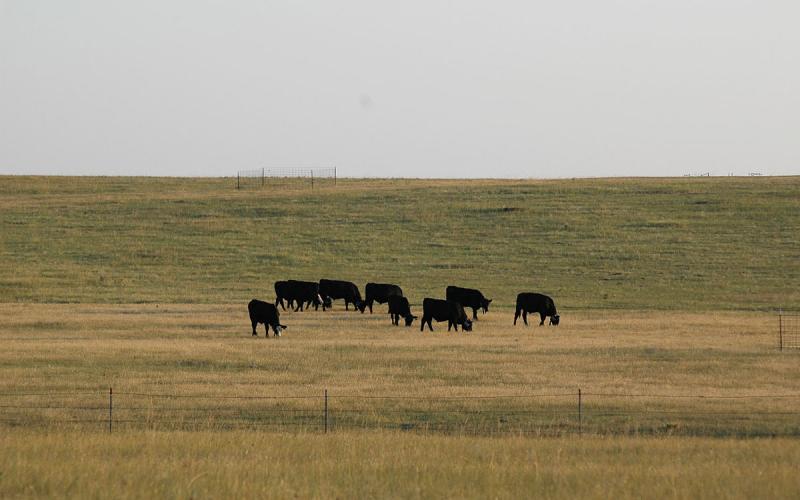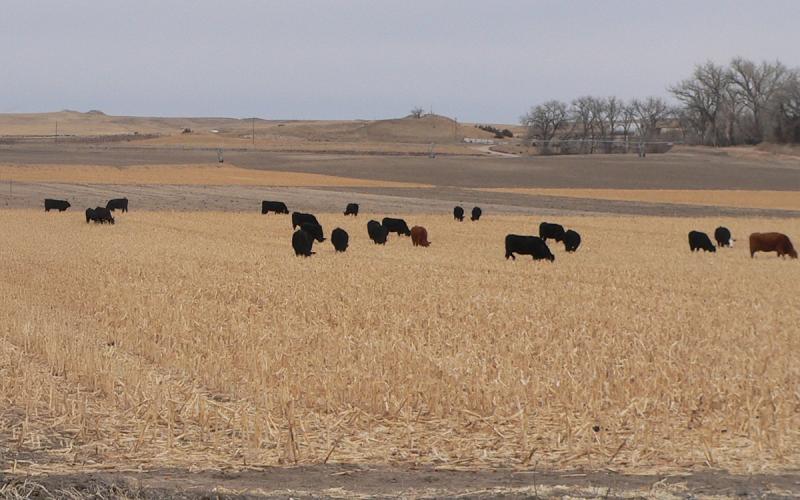
Key Points
- There were no differences in performance or feed efficiency when yearling steers were fed diets using distillers grains, soybean meal, or soybean meal with soyhulls.
- In this experiment, feeding modified distillers grains provided no added benefit when high-moisture roughage sources were used in the diet.
- Based on these results, supplemental protein sources should be evaluated on the cost per delivered unit of crude protein.
For the last 20 years, co-products from corn processing have been the primary source of supplemental crude protein for cattle feeders. Expanded ethanol production in South Dakota and the surrounding region resulted in plentiful supplies of competitively priced distillers grains, allowing feeders to formulate diets at a lower cost of gain. In addition, the added ruminally undegradable protein from distillers grains and the bunk conditioning attributes of wet or modified distillers provided nutritional and feeding benefits. So, it is no surprise that distillers grains have been included in virtually all cattle diets in recent memory. Many feeders and nutritionists have never actually fed diets that did not contain corn processing co-products.
COVID-19, and the fuel and transportation issues triggered by the pandemic, began to shift the assumption that distillers grains were the sole option. Distiller grains production is intrinsically linked to ethanol output, so as the demand for ethanol decreased, so did distillers production. At the same time, we witnessed increased oilseed demand brought about by greater demand for renewable diesel fuel. Consequently, soybean crush capacity is dramatically increasing. Will greater crush capacity result in more plentiful, less-expensive soybean meal, and, if so, how could cattle feeders take advantage?
Investigating Performance Differences

We conducted an experiment sponsored by the South Dakota Soybean Research and Promotion Council in 2022 to compare soybean meal and soyhulls to distillers grains with the objective of determining if there were performance differences caused by different protein sources.
We used three different diets: 1) a standard Midwest finishing diet using modified distillers grain; 2) a diet where we substituted soybean meal for corn and distillers; and 3) A diet where we substituted soybean meal and soyhulls for distillers. All diets had the same crude protein content, and the diet with soyhulls had the same amount of fiber as the distillers-based control diet. We conducted the study at the Southeast Research Farm near Beresford using 240 yearling steers for 118 days.
We found that there were no appreciable differences in cattle performance, feed efficiency, or carcass characteristics between yearling steers fed different protein sources. Table 1 shows the growth performance responses we observed in the study.
These measurements were not statistically different. Distributions of USDA Quality grades did not differ either. Consequently, source of protein made only a trivial difference in this study, and cattle feeders should base protein supplement decisions on cost per unit of delivered crude protein and feed handling capabilities of individual yards.
| Item |
|
|
|
|---|---|---|---|
|
Dry matter intake, pounds |
|
|
|
|
ADG, pounds |
|
|
|
|
Feed conversion |
|
|
|

